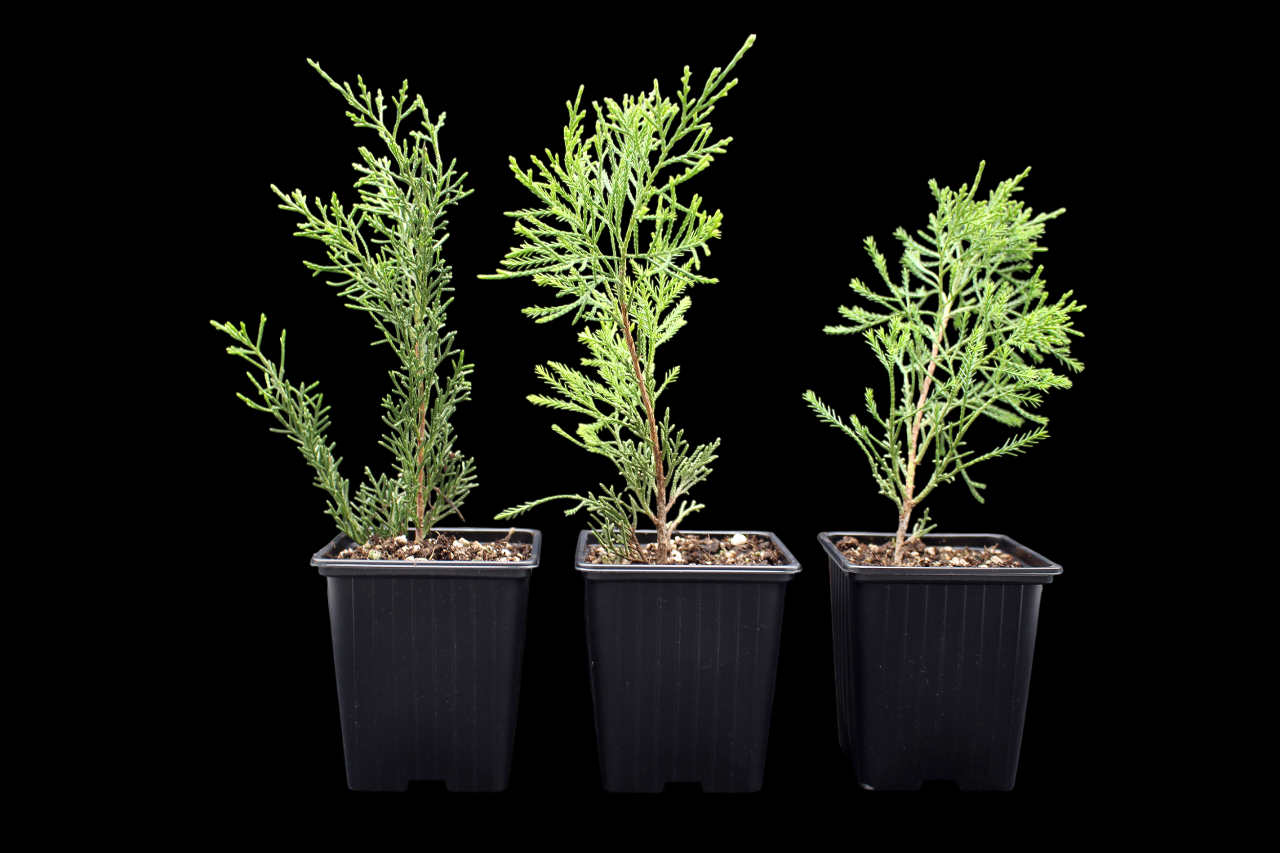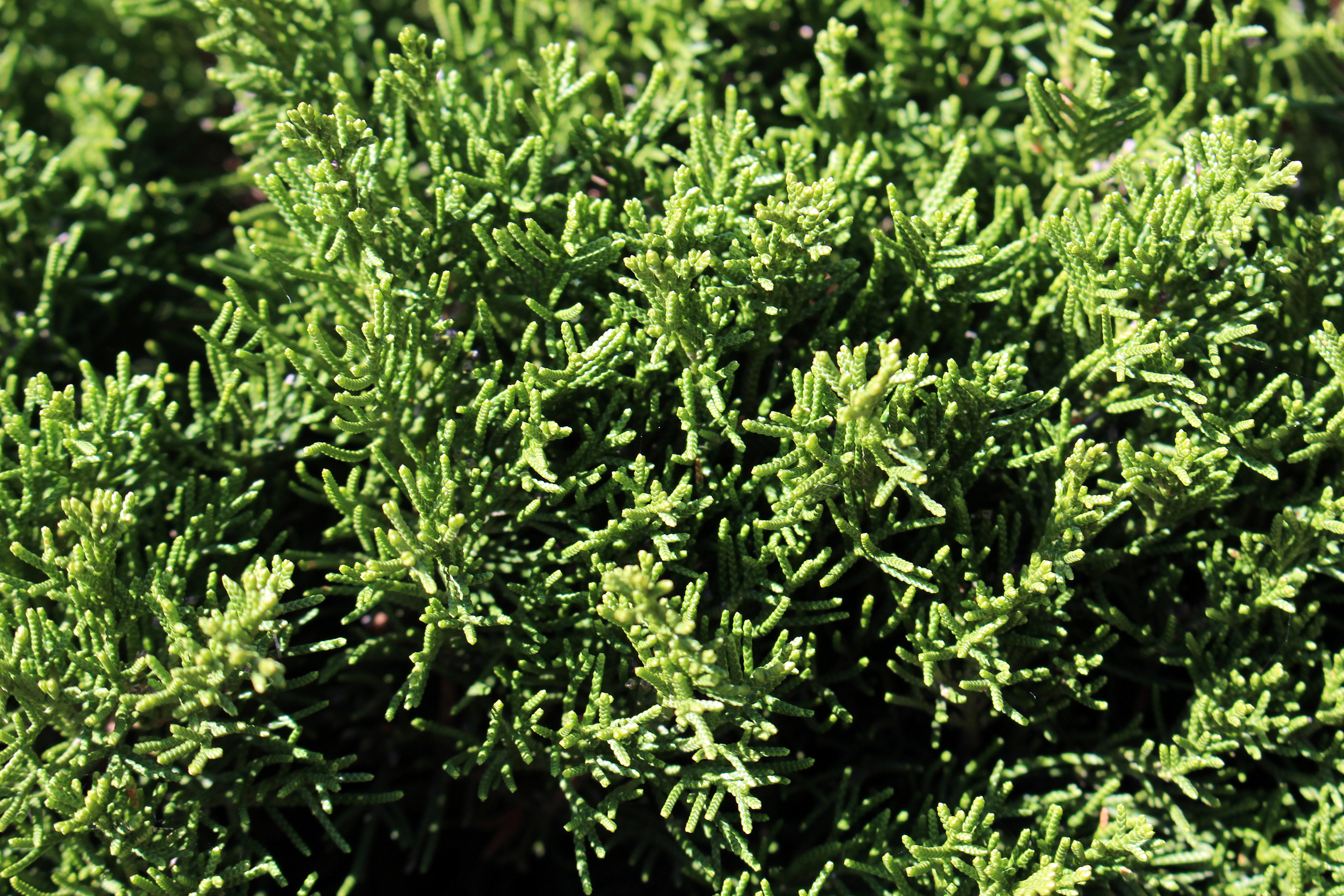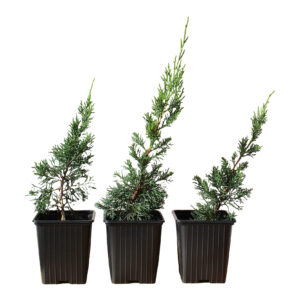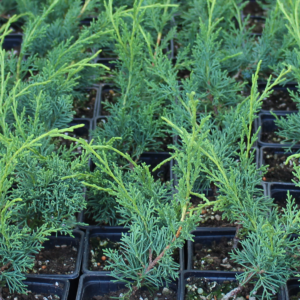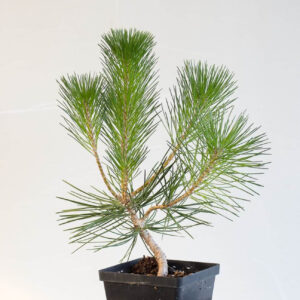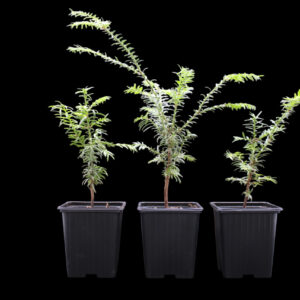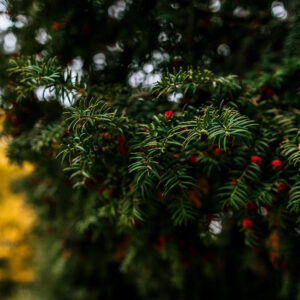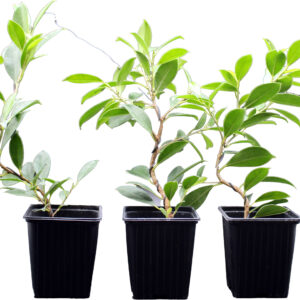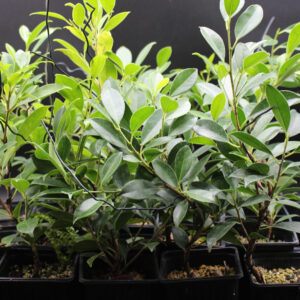Juniperus Chinensis Shimpaku Sargentii – Chinese Sargent Juniper
7,99 € – 14,99 €
Juniperus Chinensis Shimpaku Sargentii young plants, 10-30 cm
Description
Juniperus chinensis ‘Sargentii,’ commonly known as Sargent Juniper, is a versatile, low-growing evergreen shrub popular in landscaping for its hardy nature and broad adaptability. Its dense, spreading form makes it an ideal ground cover for large areas, such as slopes and rocky outcroppings, while its attractive blue-green foliage brings year-round color to the garden. This conifer’s foliage, a fine-textured, needle-like green that shifts to a hint of purple during colder months, adds multi-seasonal interest and textural contrast in gardens, providing a subtle, natural beauty to a variety of landscaping designs.
The Sargent Juniper generally grows to about 1-2 meters in height with a spread of up to 2 meters, allowing it to cover wide areas with ease. This makes it especially valuable for erosion control, as its roots and low profile help stabilize soil and prevent washouts on slopes or embankments. As a hardy and drought-tolerant plant once established, it requires minimal maintenance, making it a practical choice for low-water or xeriscape gardens. Additionally, Sargent Juniper is deer-resistant and tolerant of various soil types, thriving in well-drained, sandy, or rocky soils and handling the full sun exposure it needs for optimal health.
In landscaping, Juniperus chinensis ‘Sargentii’ serves multiple purposes: its spreading, ground-hugging habit allows it to cover bare ground effectively, filling in spaces between taller plants or serving as an underplanting beneath trees. Its fine, blue-green needles soften the look of hardscapes in rock gardens, contrasting beautifully against stone or concrete. This juniper’s hardiness and rugged aesthetic also make it suitable for coastal gardens, where it can withstand both salty air and sandy soils, creating a unified, natural look for beachside or lakefront properties. Its adaptability and resilience to challenging conditions give gardeners many options for integrating this plant into larger garden designs.
Importance in Bonsai Design
Beyond its value as a ground cover, Juniperus chinensis ‘Sargentii’ is highly sought after in bonsai design due to its natural spreading form, ease of shaping, and ability to tolerate pruning and training. Sargent Juniper’s branching habit is excellent for bonsai enthusiasts looking to achieve a mature, naturalistic look that emulates ancient trees. The plant’s hardy nature and drought tolerance make it resilient in the bonsai setting, allowing for sculpting and pruning to achieve elegant forms that mimic trees seen in nature. This juniper is favored for styles such as cascade and semi-cascade, where branches are trained to drape gracefully downwards, giving a dynamic appearance that evokes cliffside or windswept trees.
The soft, blue-green foliage of Juniperus chinensis ‘Sargentii’ responds well to bonsai training techniques, such as wiring and pruning, allowing artists to create detailed shapes and intricate designs over time. Its pliable branches can be easily wired to achieve the desired shape, while its dense foliage pads help define each branch for a full, lush appearance in bonsai form. Additionally, its tendency to develop a slightly rough, textured bark adds an aged appearance, enhancing the visual appeal of bonsai creations. Regular, strategic pruning helps maintain the juniper’s shape while encouraging the growth of finer foliage, a characteristic particularly valued by bonsai artists for the intricate look it brings to their displays.
Care Tips
Whether used as ground cover or in bonsai design, Sargent Juniper is relatively low-maintenance but benefits from a few specific care practices. In a garden setting, it thrives in full sun and requires well-draining soil to avoid root rot, which can develop in overly moist conditions. Once established, it can tolerate drought and only requires occasional watering, making it ideal for water-wise landscapes. Although Sargent Juniper is fairly hardy, it can benefit from occasional mulching to retain soil moisture and provide additional nutrients.
As a bonsai, Juniperus chinensis ‘Sargentii’ appreciates regular watering, though it’s best to let the soil dry slightly between waterings to avoid waterlogged roots. Bonsai enthusiasts will also benefit from misting the foliage periodically to keep humidity levels up, especially during dry seasons or in heated indoor environments. Pruning and wiring should be done carefully to avoid damaging the fine-textured foliage, with maintenance pruning encouraged throughout the growing season to retain its structure.
Whether planted as a hardy, drought-resistant ground cover or cultivated as an elegant, timeless bonsai specimen, Juniperus chinensis ‘Sargentii’ brings rugged beauty and versatility to any garden or bonsai collection.
Scientific name: Juniperus Chinensis Shimpaku var. Sargentii
Common Name: Chinese Sargent Juniper
Origin: Japan
Growth height: maximum 1 meter
Available sizes: 10 – 30 cm
Age: 2 – 4 years
Delivery form: pot 9 x 9 x 10 cm
Additional information
| Weight | N/A |
|---|---|
| Size | 10-20cm, 20-30cm |

